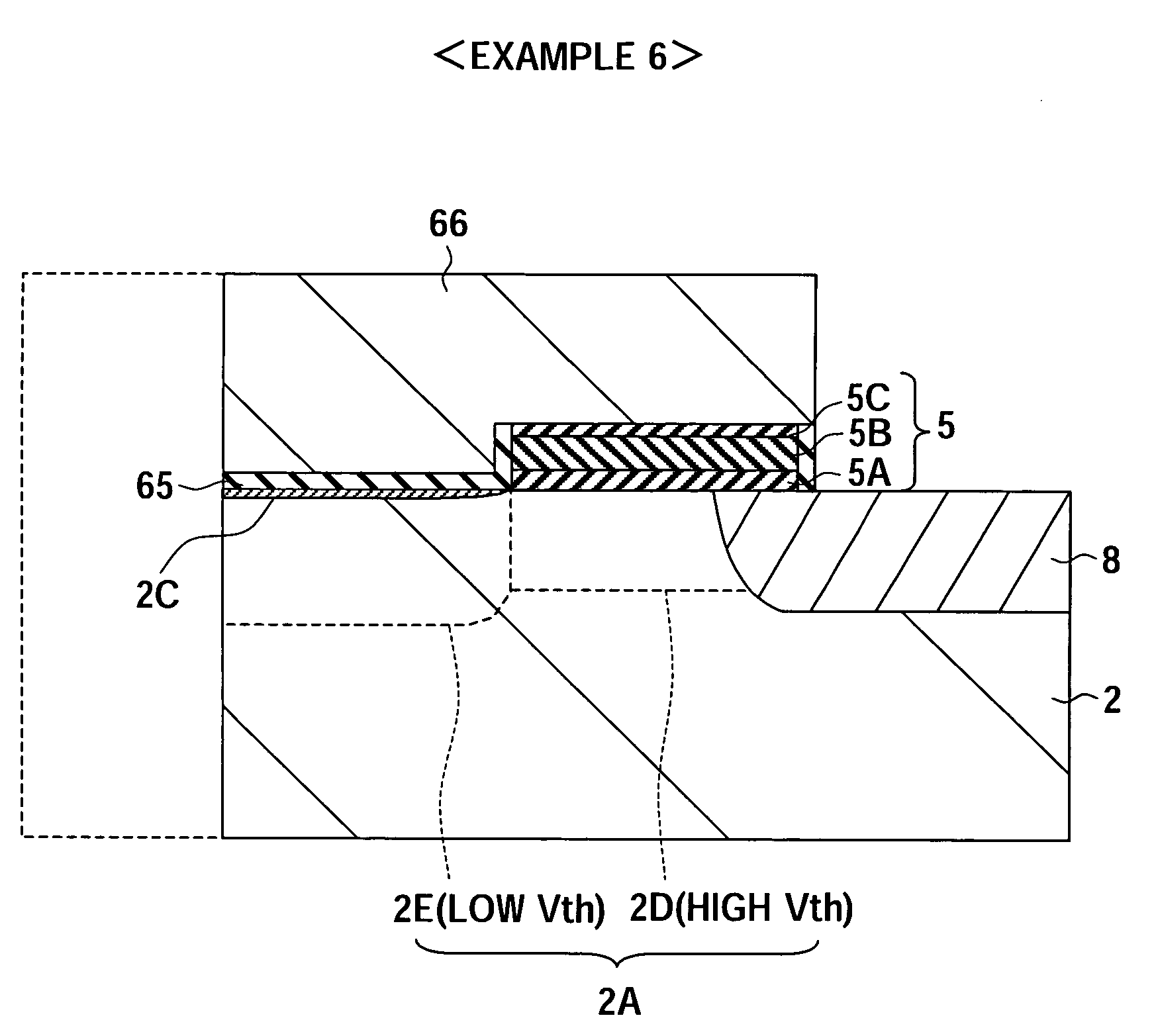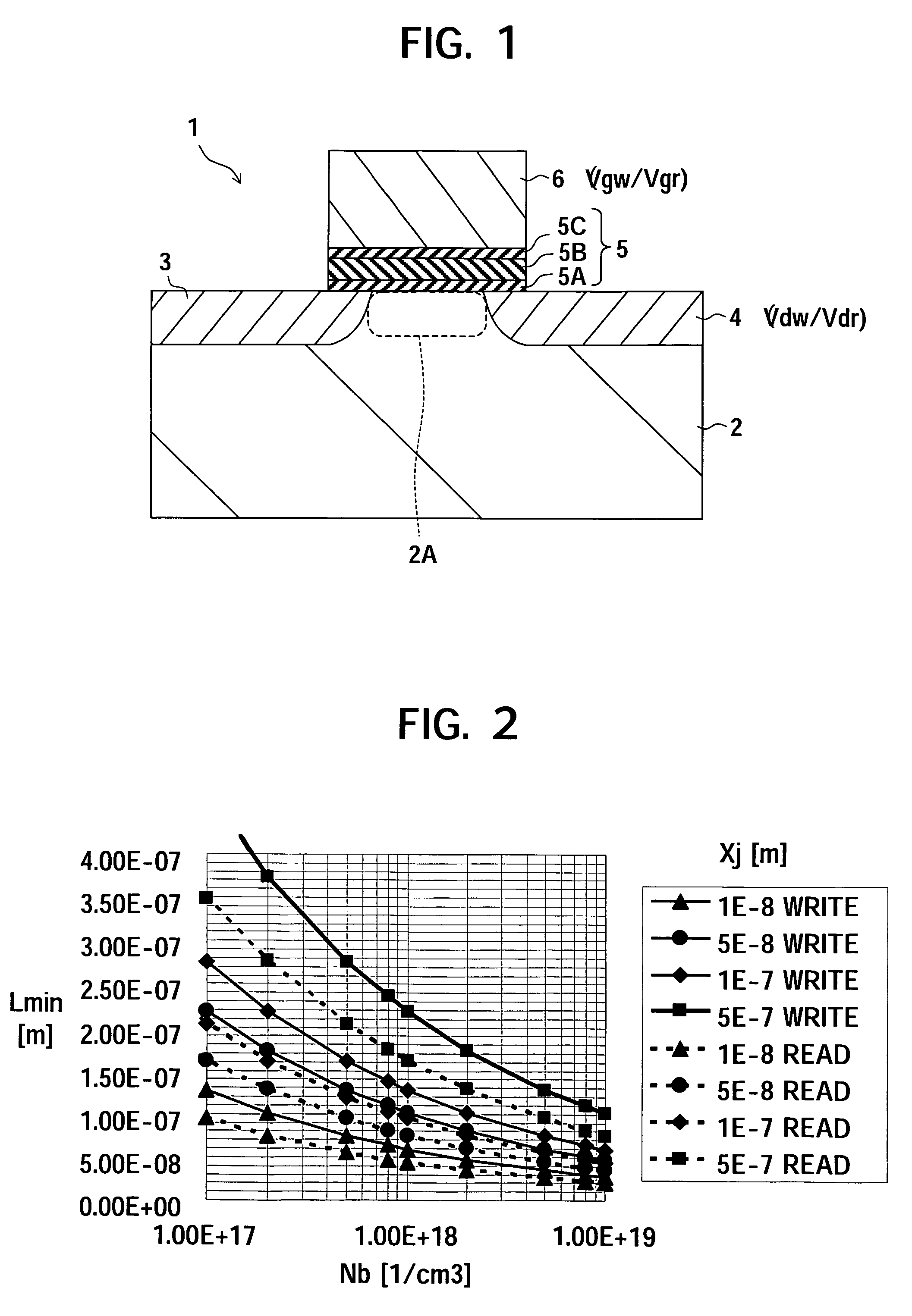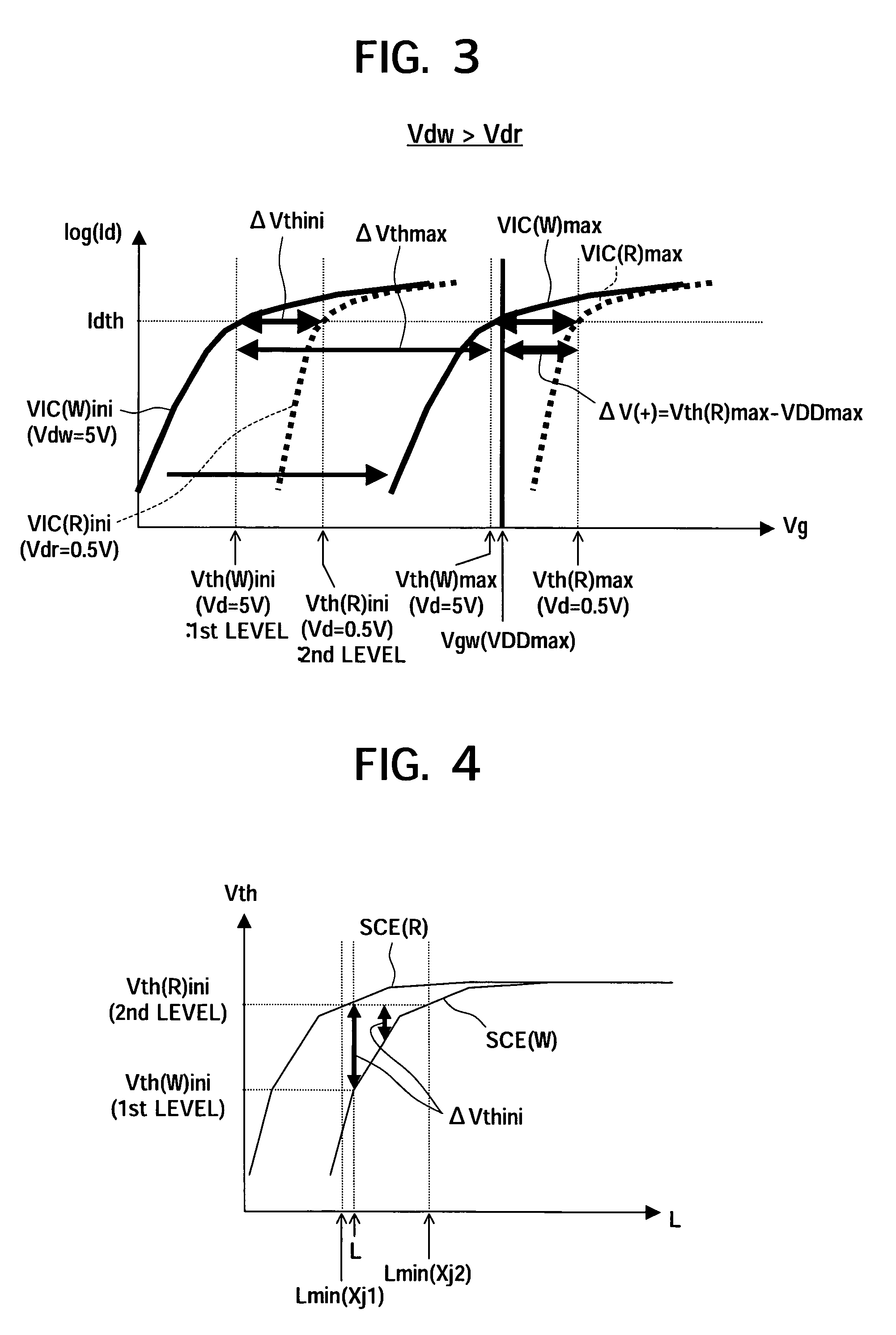Non-volatile semiconductor memory
a semiconductor memory and non-volatile technology, applied in semiconductor devices, digital storage, instruments, etc., can solve the problems of increasing the number of masks, lowering the operating voltage, and increasing the production steps, so as to reduce the voltage, the voltage margin at the time of the read operation is enlarged, and the electrical reliability such as the charge holding characteristic and data rewriting characteristic is improved
- Summary
- Abstract
- Description
- Claims
- Application Information
AI Technical Summary
Benefits of technology
Problems solved by technology
Method used
Image
Examples
first embodiment
[0056]FIG. 1 shows the structure of a memory device on which a first embodiment of the present invention is predicated. The device structure is basically the same as an ordinary MONOS type memory transistor in the point of the source side and the drain side being symmetric, so a detailed explanation will be omitted here. Further, also the method of production is substantially identical to that of an ordinary MONOS type memory transistor, so the explanation here will be omitted as well. However, it is sometimes desirable to optimize the structural parameters (for example, the channel length). This point will be explained later.
[0057]In FIG. 1, notation (reference) 1 shows a memory transistor. In the same way, notation 2 shows a semiconductor substrate, notation 2A shows a P-type semiconductor region in which a channel is formed (hereinafter referred to as a “channel formation region”), notation 3 shows an N-type source region, notation 4 shows an N-type drain region, notation 5 shows...
second embodiment
[0106]The second embodiment relates to the design of the structure of a memory transistor able to enlarge the settable range of the channel length and able to make the short channel effect at the time of a write operation further larger by that. Specifically, in the present embodiment, an asymmetric structure is given to the source side and the drain side of the memory transistor and the direction of the drain voltage is reversed at the time of a write operation and the time of a read operation so as to make the memory transistor operate reversing the asymmetry.
[0107]Note that, in the present embodiment, only the structure of the memory transistor and the direction of the drain voltage are different. The description concerning the basic operation described in the first embodiment and further the threshold voltage change and the gate length setting using equation (1) to inequality (10-1) and inequality (10-2) can be applied as is in the present embodiment.
[0108]The above equation (7)...
example 1
STRUCTURAL EXAMPLE 1
[0121]Structural Example 1 relates to a device structure forming two second conductivity type regions (S / D impurity regions) having different depths by impurity diffusion layers.
[0122]FIG. 6 is a sectional view of a memory transistor of Structural Example 1. In the first embodiment, the source region 3 and the drain region 4 are simultaneously formed, therefore they have substantially equal thicknesses (depths of the bottom junction from the surface of the channel formation region 2A) (refer to FIG. 1). Here, one of the two S / D impurity regions 7 and 8 corresponding to the source region 3 and the drain region 4, i.e., here, the S / D impurity region 8, is made thicker. The thick S / D impurity region 8 functions as the drain at the time of a write operation, and the thin S / D impurity region 7 functions as the drain at the time of a read operation.
[0123]FIGS. 7A to 7C to FIGS. 11A to 11C are sectional views of states in the formation of Structural Example 1. First, in...
PUM
 Login to View More
Login to View More Abstract
Description
Claims
Application Information
 Login to View More
Login to View More - R&D
- Intellectual Property
- Life Sciences
- Materials
- Tech Scout
- Unparalleled Data Quality
- Higher Quality Content
- 60% Fewer Hallucinations
Browse by: Latest US Patents, China's latest patents, Technical Efficacy Thesaurus, Application Domain, Technology Topic, Popular Technical Reports.
© 2025 PatSnap. All rights reserved.Legal|Privacy policy|Modern Slavery Act Transparency Statement|Sitemap|About US| Contact US: help@patsnap.com



